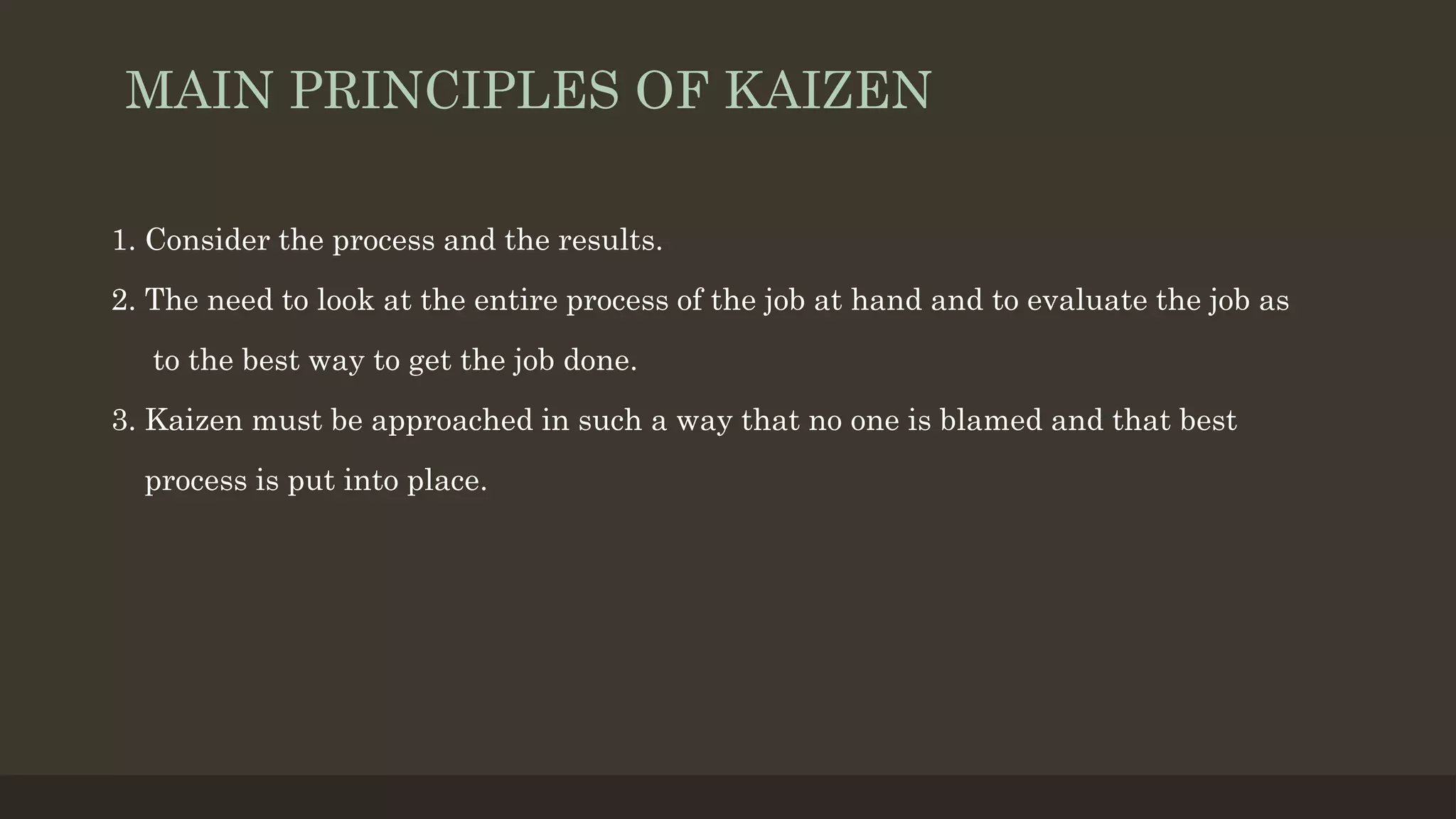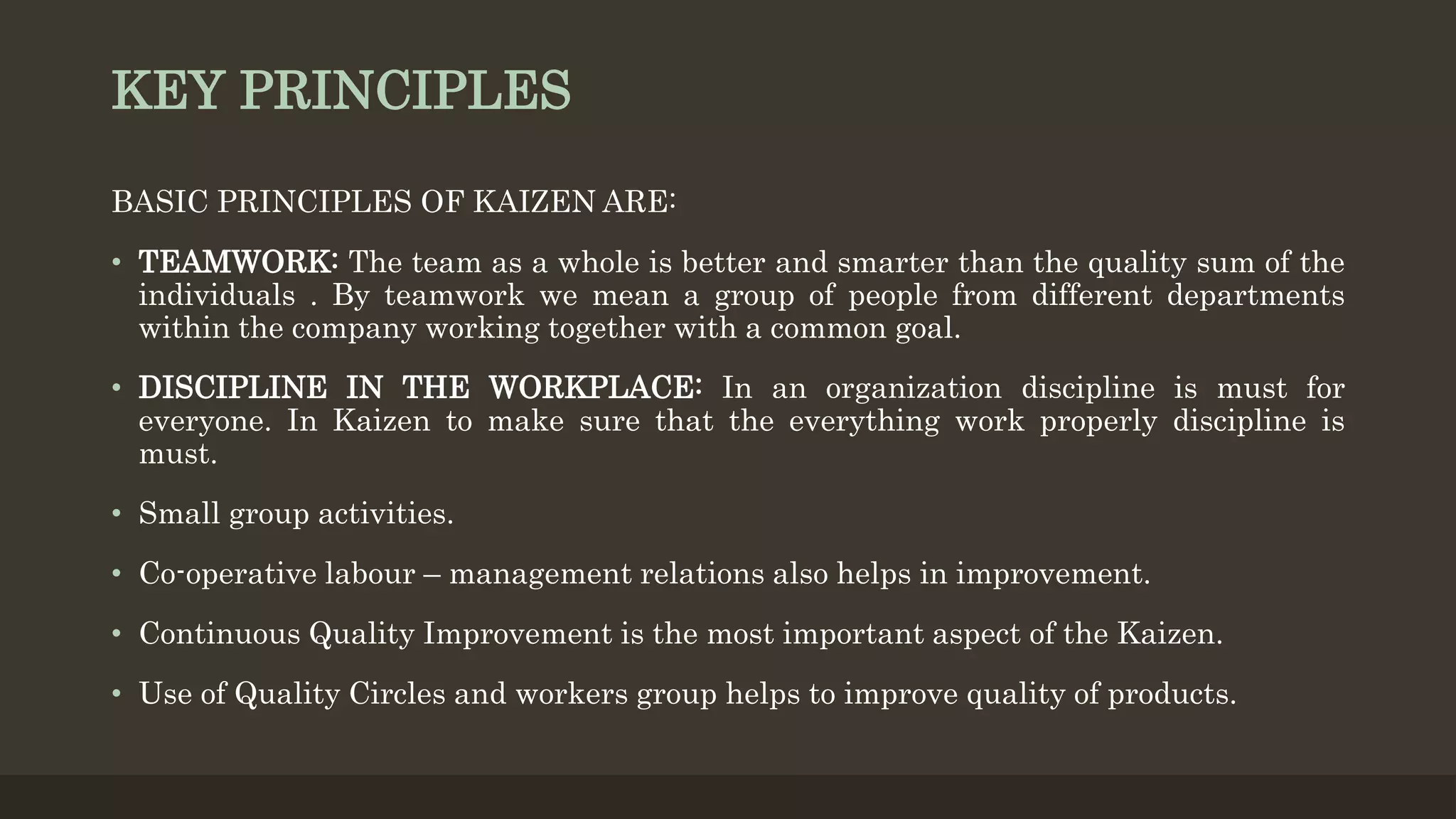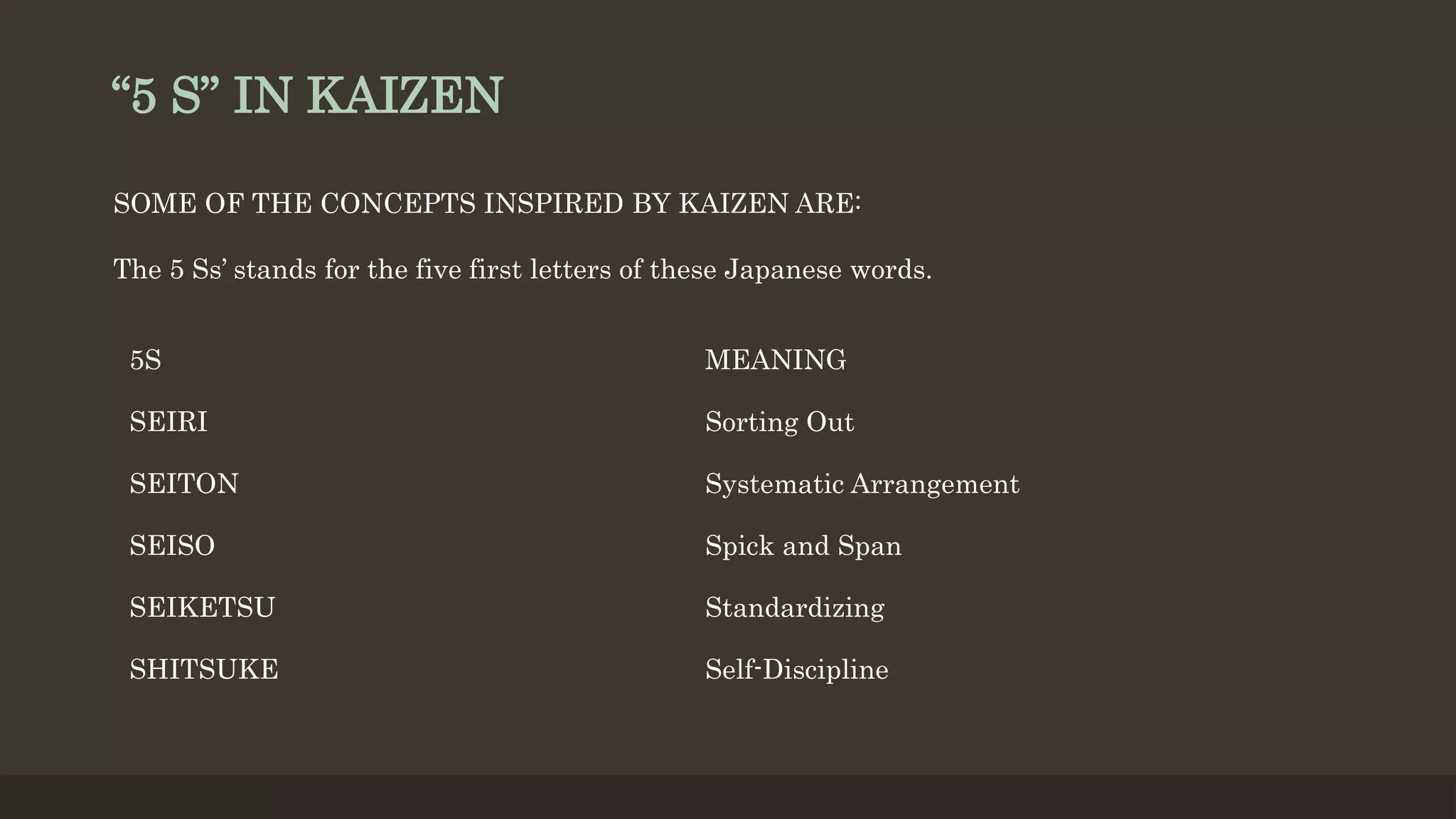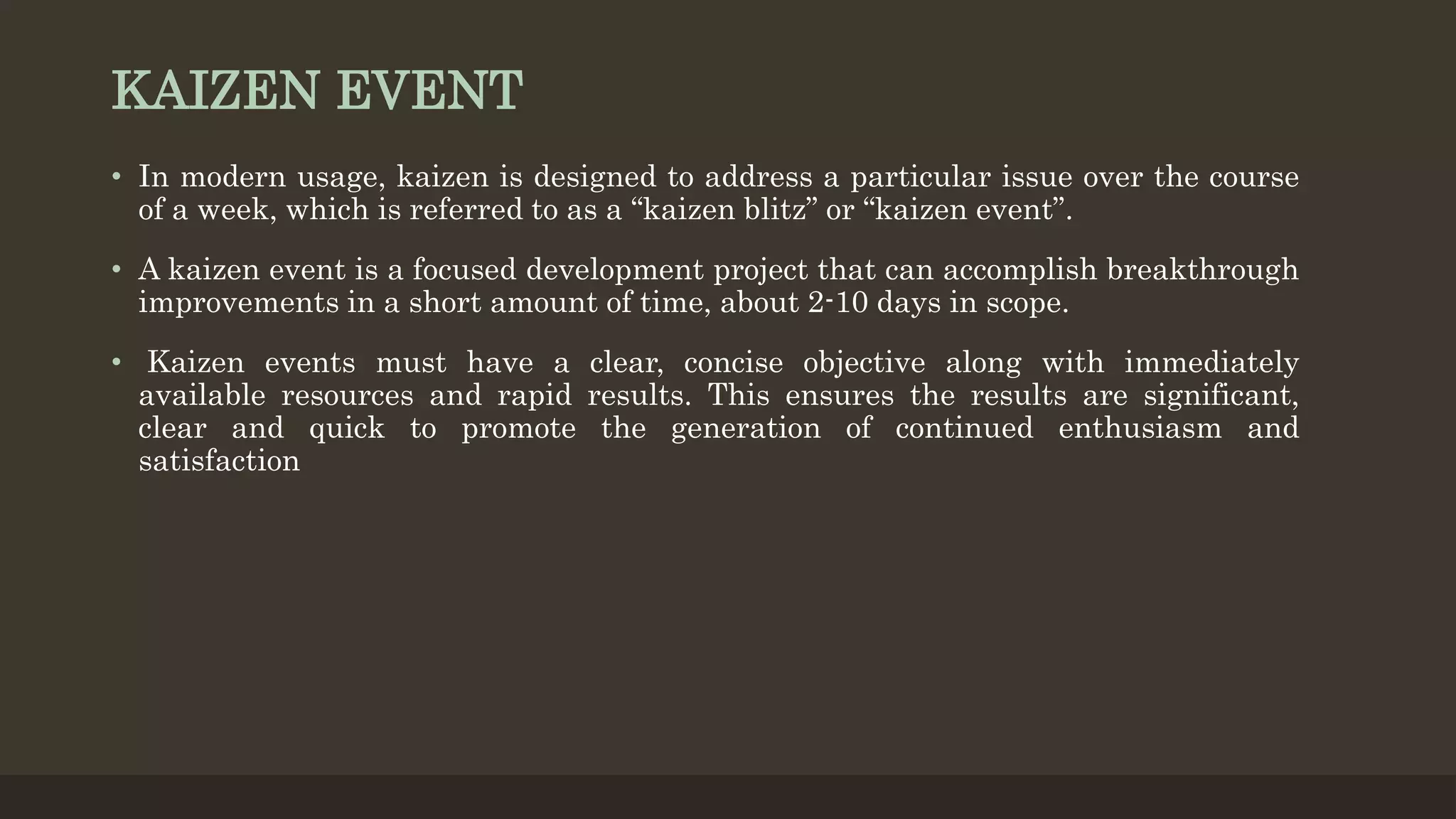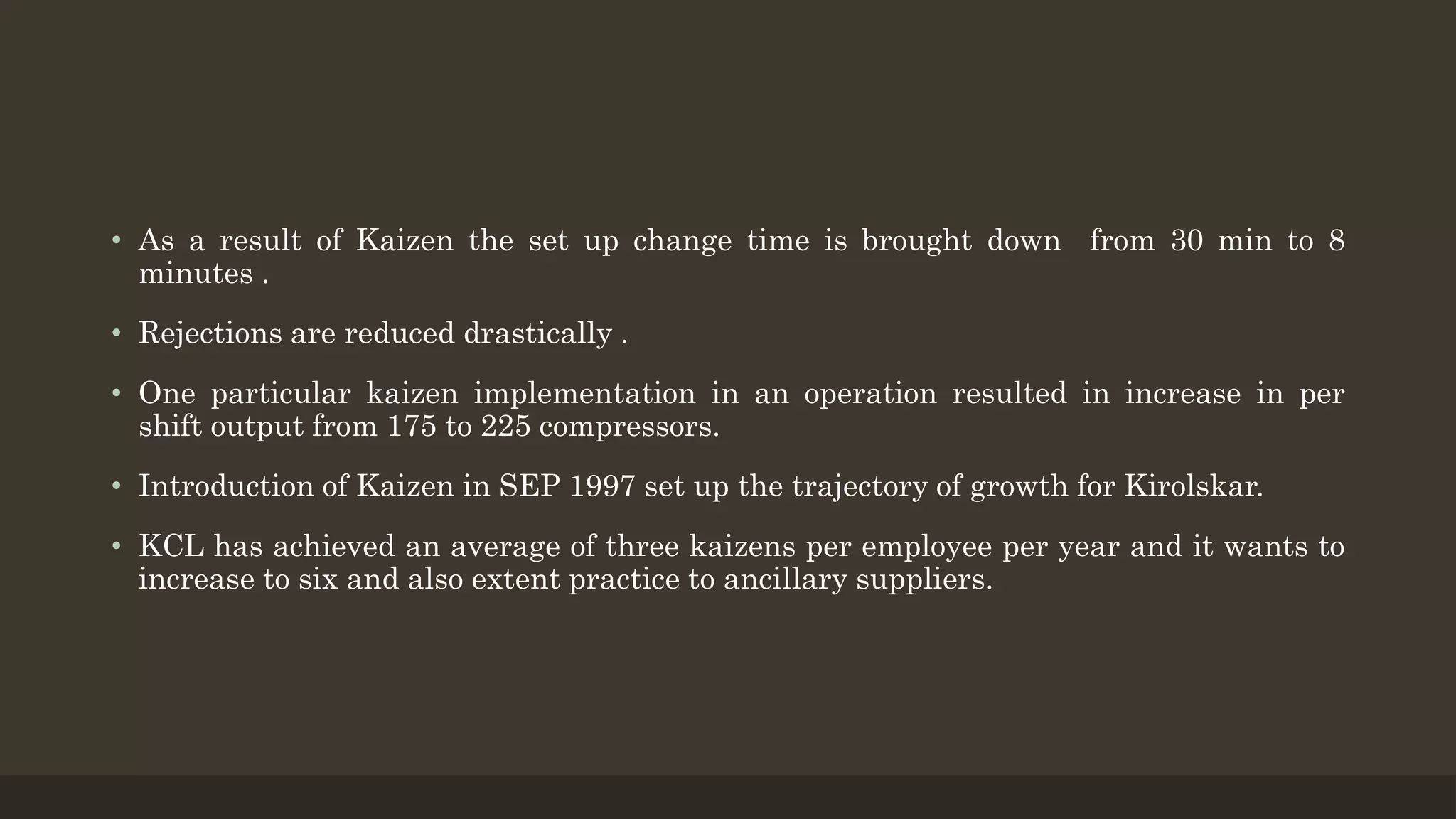Kaizen is a Japanese philosophy of continuous improvement involving everyone in the organization. The document provides an overview of Kaizen, including its history and development in Japan after World War 2. It describes the main principles of Kaizen such as considering processes and results, evaluating entire jobs, and making improvements without blame. Key aspects of Kaizen discussed include the 5S methodology, quality circles, Kaizen events, and the seven types of waste. The document also presents a case study on the implementation of Kaizen at Kirloskar Copeland Limited, an Indian manufacturing company, which led to reductions in waste, defects, and setup times as well as increases in output and employee engagement.


